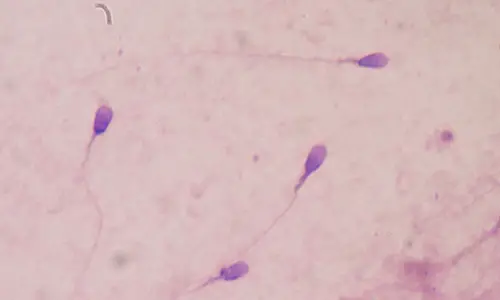1. Semen does not contain same amount of Sperm
The amount of sperm released when a man ejaculations the first time has much more sperm compared to spurts that follow. This is the reason why withdrawal method is dangerous because if a man misses it with just a split second then the most potent semen gets to where he or his partner do not want it to get. As a matter of fact it is suggested that if a couple misses the timing, they might as well not bother to withdraw at all.
2. The amount of sperm cells produced by men varies broadly
Generally, men can produce between 2 milliliters and 5 milliliters of semen every time they ejaculate. Each milliliter of semen can contain between 20 and 300 million sperms. Fertile men can produce up to 1800 million sperms though on average, most men produce 40 to 60 million sperms per milliliter which is about 80 to 300 million sperms each time they ejaculate.
3. Sperm Count and Male Fertility
Though sperm count is an important factor when it comes to determining a man’s fertility, it is not factor. Other factors that determine a man’s fertility have to do with sperm production, their transfer from the man to the woman and their ability to find their way to the female egg that waits at the end of a female genital tract.
4. Parts of the Human Sperm
Generally, human sperms have tails that help them swim through liquids. Their heads have tiny energy factories known as mitochondria as well as DNA that is often packaged into 23 chromosomes. The tip of the head contains enzymes that help in breaking down the protective layers found on the female egg’s surface.
5. Human Sperm are not similar
All human sperms do not look similar; there are some sperms that come with odd features. Some sperms have no head while others have two heads. Others have no tails or come with tiny tails while others have huge heads. Sperms may also be bent or their tails may have a spiral tail. Most of these unusual sperms are likely to be infertile.
6. Men are not born with Sperm Cells
For men, sperms are not ready at birth; they are made later on in life starting from puberty. Women on the other hand are born complete with their eggs in place. Sperms are made in the seminiferous tubules inside the testicles. Upon production, they mature in the vas deferens and epididymis, tubes that connect to the urethra where urine passes.
7. Sperms and Urine use the same Passage
From the vas deferens and epididymis, mature sperms pass through the urethra in order to arrive into a female’s reproductive tract. The urethra is also used to urinate. Sperms get out of a man’s body in the form of semen. The entire sperm production and maturing process in a man takes up to 74 days though the average is 9 weeks.
8. Sperms are best produced in Cool Environments
Male testicles descend from the body and hang between their legs from puberty. This aids in maintaining cool temperatures, 2 degrees below normal temperatures to allow for sperm production. If both testicles are retained inside the body after puberty then the man becomes infertile. If a single testicle descends, there are chances of being fertile but it is not guaranteed.
9. Sperm production is constantly happening
Sperms are constantly produced inside a man’s testicles. Men need to ejaculate in order to prevent the testicles from exploding. If this happens, the sperms are reabsorbed in the body. Sperms are produced even after a man’s undergoes vasectomy.
10. Sperm Production and Testicle Volume are proportional
The amount of sperm that a man produces is directly proportional to their testicle volume. Human testicles are much smaller compared to their body weight unlike in animals like chimpanzees. A human testis weighs about 10 to 15 grams and has a volume of 20 to 40 milliliters.











Leave a Reply